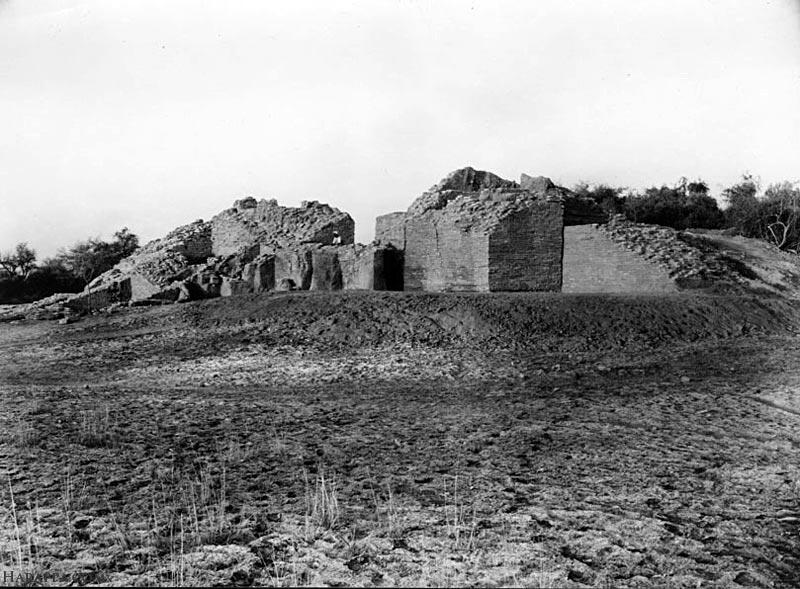ACC - Citadel Gateway Southeast
Overview of excavated remains of the so-called city wall and gateway at the southeast edge of the citadel mound at Mohenjo-daro. This structure was interpreted as a postern gate, with associated rooms and massive fired brick walls. It would have controlled access into the southern area of the citadel. The gatway was later blocked up by the Harappans and structures were filled with pottery and debris to allow for construction of later buildings on top of the wall (see photos 24 and 110)
The only photograph with this title typed on a piece of paper stuck to the bottom of the image. Very similar photograph used in The Indus Civilization, Plate VI, B. and described on page 40: "At Harappa the equivalent citadel-mound of platform is, as has been noted above, retained by a substantial defensive system. At or near its south-eastern corner the Mohenjo-daro citadel-mound incorporate in its margin a system of solid burnt-brick towers which form part of an accumulated complex not yet fully explored (pl. VI B). The earliest of these towers, 30 x 22 feet, was contemporary with the platform. It stood on massive burnt brick foundations, and was notable for the fact that its brickwork was originally reinforced by horizontal timbers, 9 x 5 feet, now represented by slots in the face of the building (pl. VII). As the timber decayed, the adjacent brickwork had tended to collapse and been partially patched with brick. The later builders of the adjacent towers, presumably warned by this weakness, did not repeat the method, although it one which has inadvisedly been used in may periods and places, and may at Mohenjo-daro have been taken over from reinforced mud brick construction, either locally or further west. The only other building on the acropolis known to have been built in this fashion is the Great Granary which, significantly, was also contemporary with the construction of the citadel-mound. It would almost appear that the mound and its builds are the work of a new immigrant regime accustomed to the traditions of mu-brick rather than of baked brick architecture." (p. 40)
Reference: Wheeler's Caption: 117
No. 117

